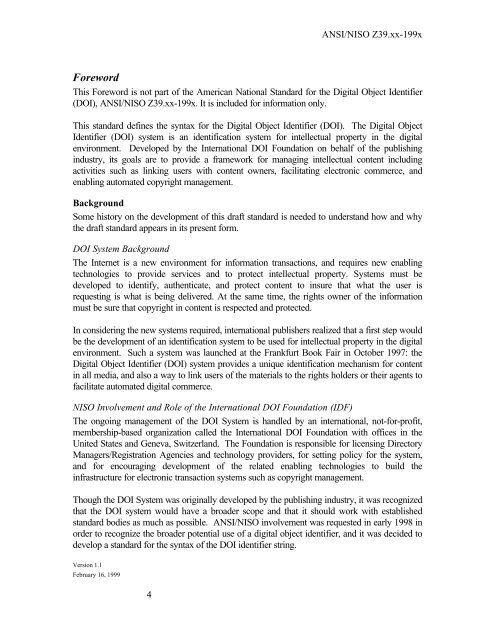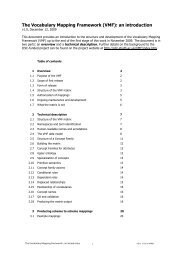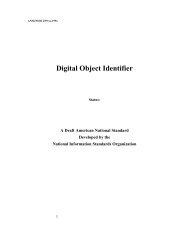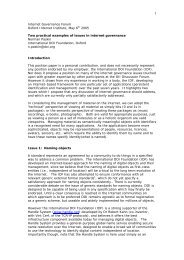A Draft American National Standard Developed by the ... - DOIs
A Draft American National Standard Developed by the ... - DOIs
A Draft American National Standard Developed by the ... - DOIs
You also want an ePaper? Increase the reach of your titles
YUMPU automatically turns print PDFs into web optimized ePapers that Google loves.
ANSI/NISO Z39.xx-199xForewordThis Foreword is not part of <strong>the</strong> <strong>American</strong> <strong>National</strong> <strong>Standard</strong> for <strong>the</strong> Digital Object Identifier(DOI), ANSI/NISO Z39.xx-199x. It is included for information only.This standard defines <strong>the</strong> syntax for <strong>the</strong> Digital Object Identifier (DOI). The Digital ObjectIdentifier (DOI) system is an identification system for intellectual property in <strong>the</strong> digitalenvironment. <strong>Developed</strong> <strong>by</strong> <strong>the</strong> International DOI Foundation on behalf of <strong>the</strong> publishingindustry, its goals are to provide a framework for managing intellectual content includingactivities such as linking users with content owners, facilitating electronic commerce, andenabling automated copyright management.BackgroundSome history on <strong>the</strong> development of this draft standard is needed to understand how and why<strong>the</strong> draft standard appears in its present form.DOI System BackgroundThe Internet is a new environment for information transactions, and requires new enablingtechnologies to provide services and to protect intellectual property. Systems must bedeveloped to identify, au<strong>the</strong>nticate, and protect content to insure that what <strong>the</strong> user isrequesting is what is being delivered. At <strong>the</strong> same time, <strong>the</strong> rights owner of <strong>the</strong> informationmust be sure that copyright in content is respected and protected.In considering <strong>the</strong> new systems required, international publishers realized that a first step wouldbe <strong>the</strong> development of an identification system to be used for intellectual property in <strong>the</strong> digitalenvironment. Such a system was launched at <strong>the</strong> Frankfurt Book Fair in October 1997: <strong>the</strong>Digital Object Identifier (DOI) system provides a unique identification mechanism for contentin all media, and also a way to link users of <strong>the</strong> materials to <strong>the</strong> rights holders or <strong>the</strong>ir agents tofacilitate automated digital commerce.NISO Involvement and Role of <strong>the</strong> International DOI Foundation (IDF)The ongoing management of <strong>the</strong> DOI System is handled <strong>by</strong> an international, not-for-profit,membership-based organization called <strong>the</strong> International DOI Foundation with offices in <strong>the</strong>United States and Geneva, Switzerland. The Foundation is responsible for licensing DirectoryManagers/Registration Agencies and technology providers, for setting policy for <strong>the</strong> system,and for encouraging development of <strong>the</strong> related enabling technologies to build <strong>the</strong>infrastructure for electronic transaction systems such as copyright management.Though <strong>the</strong> DOI System was originally developed <strong>by</strong> <strong>the</strong> publishing industry, it was recognizedthat <strong>the</strong> DOI system would have a broader scope and that it should work with establishedstandard bodies as much as possible. ANSI/NISO involvement was requested in early 1998 inorder to recognize <strong>the</strong> broader potential use of a digital object identifier, and it was decided todevelop a standard for <strong>the</strong> syntax of <strong>the</strong> DOI identifier string.Version 1.1February 16, 19994






